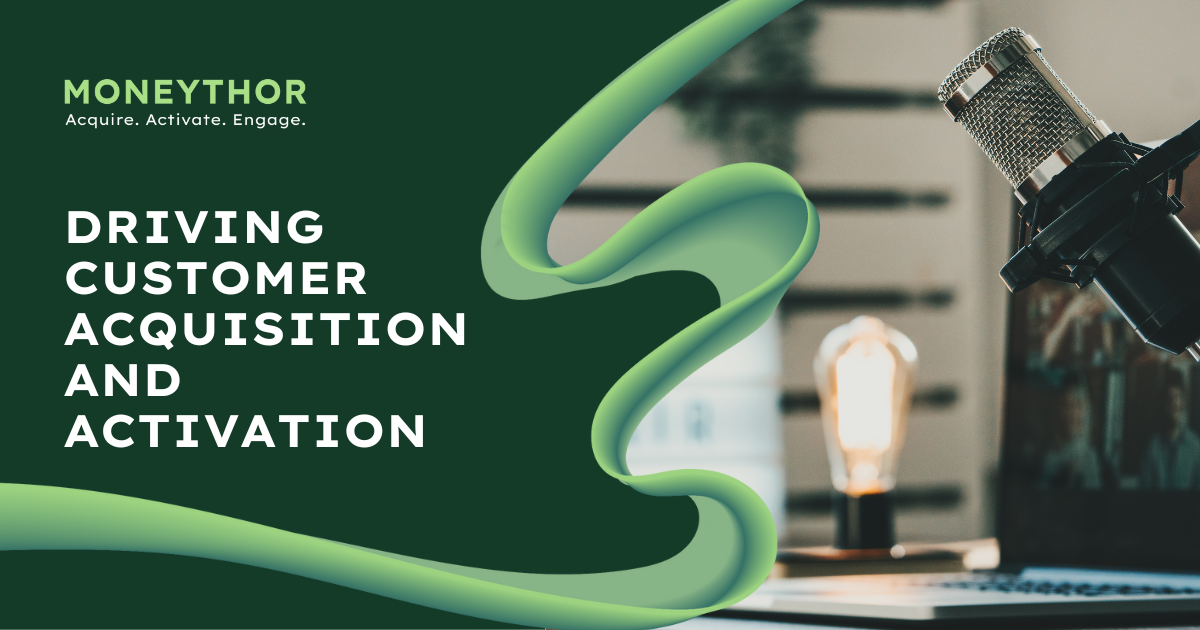Personalisation has and continues to be a key area of focus for the banking sector globally. The interest of banks in incorporating personalisation capabilities into their digital services continues to be on the rise, as is innovation in the space.
In the past, banks may have recognised the value of data, but struggled to implement programs that really made use of this.
A notable shift has occurred since then. This shift reflects an understanding of how more digitally engaged customers translate to increased profitability, and how data is key in building lasting customer engagement.
Moneythor CEO and Co-founder Olivier Berthier and FinTech Futures editor Paul Hindle discussed the importance of personalised banking services, the key challenges banks are facing when it comes to customer acquisition and what it is they can be doing differently on the What the FinTech? Podcast.
Current Customer Acquisition Strategies in Financial Institutions
Many financial institutions are employing a traditional mix of customer acquisition strategies, including referrals and member-get-member campaigns. While the referral approach has been around for some time, it was previously limited to a few products and considered a somewhat dormant acquisition tactic. However, there’s now a resurgence and increased demand for this approach.
The revival is attributed to the seamless experience it offers, allowing friends and family to receive benefits when they join. Unlike the past, where the process was lengthy and had significant friction, now a simple tap within the app can initiate a referral.
Challenges and Pain Points in Acquiring New Customers for Banks
The primary challenges revolve around activating and retaining new customers. While enticing incentives may attract individuals to join a bank, the critical question arises: will they remain engaged once they’ve received their rewards? The key lies in not only acquiring new customers but also in activating them and fostering long-term engagement. This involves regular nudges and sustained incentivisation to ensure ongoing customer involvement.
How Banks can Address These Challenges and Pain Points
Once a customer is onboarded, bombarding them with upsell and marketing offers is counterproductive. Instead, focus on allowing customers to discover rich features and reward them for specific behaviours and actions.
The incentivisation process shouldn’t end after onboarding. Offering a voucher during onboarding is a start, but additional rewards can be earned by meeting specific criteria going forward.
Leveraging the power of connections is also very crucial. Customers often onboard through a friend or family referral, and this connection can be continuously incentivised throughout their journey, effectively leveraging peer pressure in a positive manner.
Opportunities and Benefits of Correctly Implemented Personalised Acquisition Strategies
Properly implemented personalised acquisition strategies create opportunities for acquiring genuine customers who contribute to the bank’s revenue. Engaging customers digitally translates to increased profitability. Genuine customers, being more engaged, become more profitable, leading to the potential for expanding product usage and increasing overall funds.
From a customer perspective, the benefits include receiving tailored content, such as financial well-being programs, aimed at enhancing financial literacy, promoting savings, and improving overall financial management. This not only contributes to customers being better off financially but is particularly impactful amid the current cost-of-living crisis.
The Future of Personalisation
Personalisation has evolved and today involves a more integrated approach, combining traditional Personal Financial Management (PFM) techniques with other techniques such as loyalty, gamification and referrals. This approach aims to enhance individuals’ financial management skills by providing engaging and interactive experiences within digital banking channels.
For example, users who set up a savings account and specify their savings goals can receive rewards for progressing toward their milestones. Banks and brands can launch co-marketing campaigns in app that encourage multiple purchases which are tracked and managed through interactive challenges or games. And customers can work with their friends and families to ensure that actions our completed to receive incentives as part of an ongoing referral program.
Listen to the full podcast episode here.

